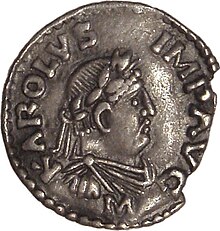
The phantom time conspiracy theory is a pseudohistorical conspiracy theory first asserted by Heribert Illig in 1991. It hypothesizes a conspiracy by the Holy Roman Emperor Otto III, Pope Sylvester II, and possibly the Byzantine Emperor Constantine VII,[further explanation needed] to fabricate the Anno Domini dating system retroactively, in order to place them at the special year of AD 1000, and to rewrite history[1] to legitimize Otto's claim to the Holy Roman Empire. Illig believed that this was achieved through the alteration, misrepresentation and forgery of documentary and physical evidence.[2] According to this scenario, the entire Carolingian period, including the figure of Charlemagne, is a fabrication, with a "phantom time" of 297 years (AD 614–911) added to the Early Middle Ages.
Evidence contradicts the hypothesis and it failed to gain the support of historians, and calendars in other European countries, most of Asia and parts of pre-Columbian America contradict this.[3][4][5][6]
- ^ Hans-Ulrich Niemitz, Did the Early Middle Ages Really Exist? pp. 9–10.
- ^ Fomenko, Anatoly (2007). History: Chronology 1: Second Edition. Mithec. ISBN 978-2-913621-07-7.[unreliable source?]
- ^ Cite error: The named reference
Dutchwas invoked but never defined (see the help page). - ^ Cite error: The named reference
Foesselwas invoked but never defined (see the help page). - ^ Cite error: The named reference
Muetzwas invoked but never defined (see the help page). - ^ Cite error: The named reference
Adamswas invoked but never defined (see the help page).